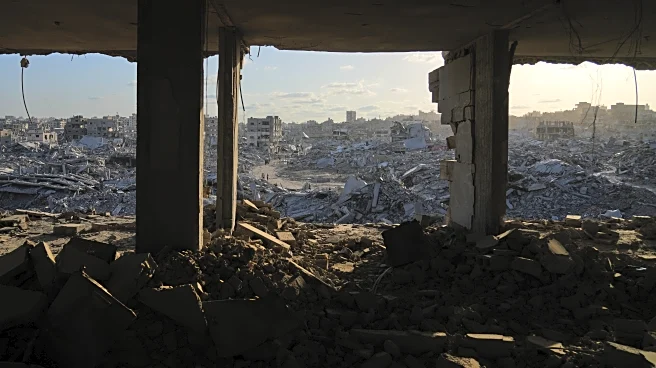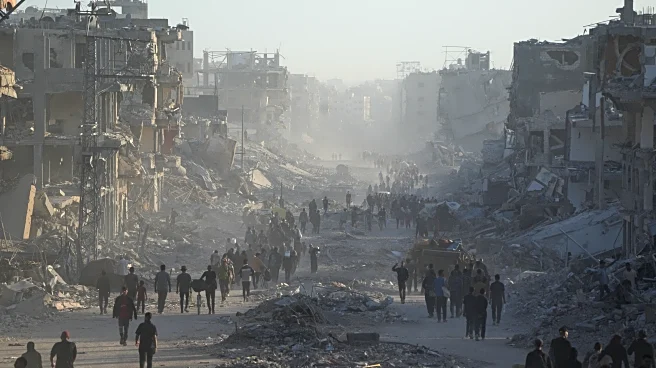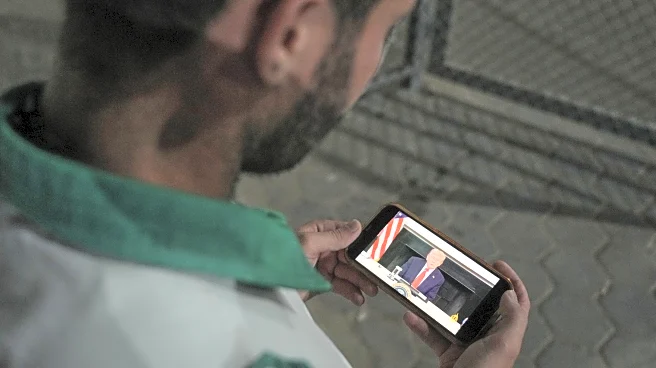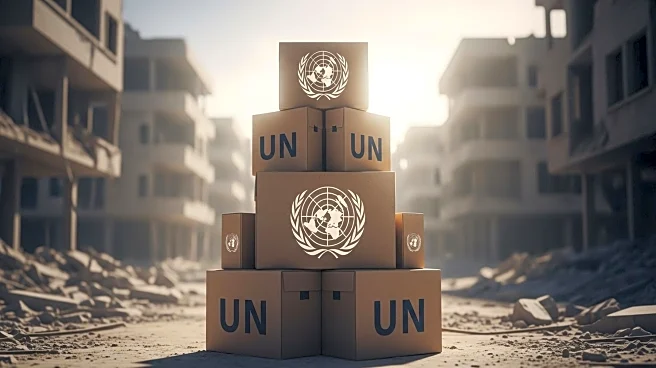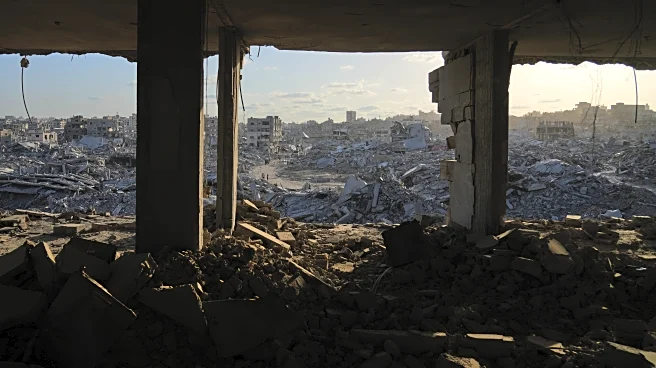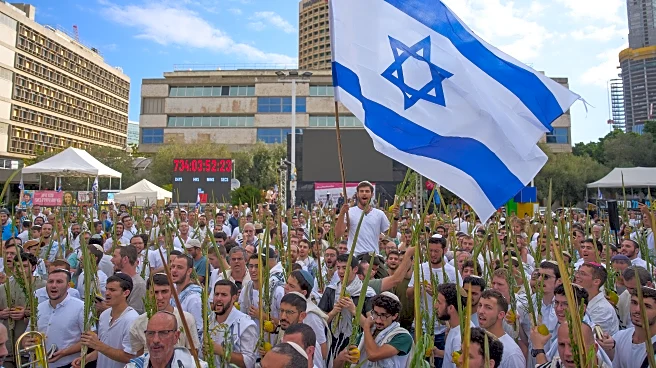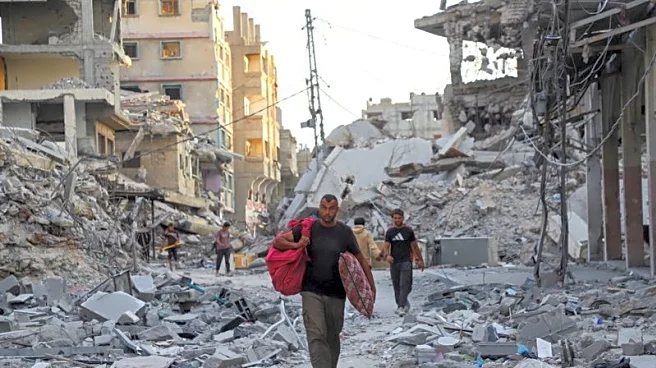What is the story about?
What's Happening?
Preparations are underway to increase humanitarian aid into Gaza following a ceasefire agreement between Israel and Hamas. The Israeli defense body responsible for humanitarian aid, COGAT, anticipates that around 600 trucks per day will enter Gaza starting Sunday. The United Nations has approximately 170,000 metric tons of food, medicine, and other aid ready to enter once Israel approves. Egypt is also contributing by sending 400 trucks carrying aid into Gaza, which will be inspected by Israeli forces before entry. Despite these efforts, the future of the Gaza Humanitarian Fund, an Israeli- and U.S.-backed contractor, remains uncertain.
Why It's Important?
The increase in humanitarian aid is crucial for addressing the hunger crisis and famine affecting parts of Gaza due to expanding Israeli offensives and restrictions on aid. The United Nations and other international bodies are poised to deliver significant amounts of aid, which could alleviate the dire conditions faced by the population. The involvement of Egypt and the inspection process by Israeli forces highlight the complex logistics and political considerations involved in delivering aid. The uncertainty surrounding the Gaza Humanitarian Fund raises questions about the long-term sustainability and effectiveness of aid distribution in the region.
What's Next?
The ceasefire agreement has set the stage for a potential release of hostages and prisoners, which could further stabilize the region. President Trump is expected to visit Israel and Egypt, potentially influencing diplomatic relations and future aid efforts. The fate of the Gaza Humanitarian Fund and the role of the United Nations in the scaled-up relief effort remain unclear, with potential implications for future humanitarian operations. The situation in Gaza continues to evolve, with ongoing efforts to repair infrastructure and facilitate aid delivery.
Beyond the Headlines
The humanitarian crisis in Gaza underscores the ethical and logistical challenges of delivering aid in conflict zones. The dismantling of food-distribution sites operated by the Gaza Humanitarian Fund raises concerns about the control and distribution of aid, and the potential for exploitation by militant groups. The ceasefire and increased aid deliveries offer hope for a resolution to the two-year conflict, but the long-term governance of Gaza and the role of Hamas remain unresolved issues.
AI Generated Content
Do you find this article useful?





